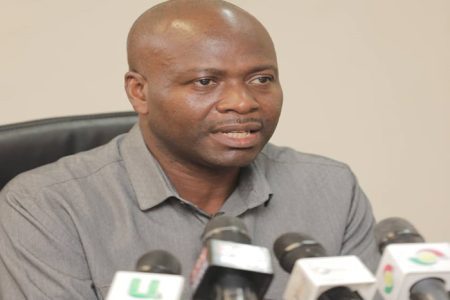Two of Ghana’s critical power installations, the Aboadze Power Enclave, home to the Takoradi Thermal Power Station and the Twin Energy Station, are under severe threat from sea erosion.
These power plants, located in the Western Region, generate a combined 530 megawatts of electricity—330MW from the Takoradi Thermal Power Station and 200MW from Twin City Energy.
The potential impact of sea erosion on these plants could disrupt the stable supply of electricity, leading to nationwide load shedding.
5 coastal areas
Additionally, five coastal areas—Shama-Anlo Beach, Daukor Shorelines, Ezinlibo Coastal Stretch, Ningo-Prampram Shoreline, and Blekusu Coastline—are also at significant risk.
Other critical infrastructure at risk
Other important infrastructure at risk at the shorelines includes the Cape Coast-Takoradi Highway, St. Augustine’s College, the University of Cape Coast, Cape Coast Central Hospital, Moree, Keta, Blekusu, and the forward operating base of the Ghana Navy at Enzulebu in the Ellembele District, Western Region.
These regions, which host businesses, schools, and residential areas, lie within a 290-kilometer stretch of Ghana’s coastline vulnerable to sea erosion.
As Ghana grapples with the looming threat of sea erosion, concerted efforts from government agencies, local communities, and international partners will be crucial in safeguarding the nation’s critical infrastructure and coastal communities.
Dr. John Kissi, Chief Executive Officer of the Ghana Hydrological Authority, revealed these concerns during a briefing to the media, accompanied by the Minister of Works and Housing, Kojo Oppong Nkrumah.
Dr. Kissi emphasized the crucial role of the two power plants and the affected shorelines in Ghana’s infrastructure and economy.
550 kilometers coastline
Ghana’s coastline spans approximately 550 kilometers, with about one-third (180 kilometers) considered fairly stable and low-risk.
However, the remaining two-thirds (370 kilometers) are at risk of sea erosion, with only 80 kilometers currently protected.
This leaves 290 kilometers, including the power plants and coastal areas, unprotected and highly vulnerable.
Dr. Kissi stressed the urgent need for intervention, highlighting that even the stable 180 kilometers could become vulnerable over time due to increasing human activities, such as sand mining, and natural factors like climate change and rising sea levels.
“We have two-thirds of our coastline, about 370 kilometers stretch, at risk and requires intervention, requires protection, requires some action on our part,” Dr. Kissi stated.
Ghana loses 1.3 meters to sea erosion annually
He said Ghana loses as much as 1.3 meters of coastline to sea erosion each year.
This comprises one meter in the central section of the coastline and 0.35 meters in the Western and Eastern ends.
He noted that some communities have disappeared from the Ghana map due to sea erosion.
Completion rates of various coastal protection works
Dr. Kissi provided updates on the completion rates of various coastal protection works: Dansoman coastal protection works are almost completed, Discove is 37% complete, Cape Coast is 79% complete, Komenda is 98% complete, Anomabo is 74% complete, Elmina is 98% complete, Aboadze is 70% complete, and Ningo Prampram is 70% complete.
In addition to Axim, which was completed two years ago, he said the government targets to complete three of these projects before the end of this year.
He assured that the Ghana Hydrological Authority is actively working with the sector ministry and the government to address these issues.
Minister’s Visit
Minister for Works and Housing, Kojo Oppong Nkrumah, paid a surprise visit to the Ghana Hydrological Authority to familiarize himself with their operations.
During his visit, the Minister toured various office spaces, including the data and server rooms where flood-related data and alerts are managed.
This visit aimed to understand the challenges faced by the Authority and discuss potential solutions.
M Nkrumah emphasized the need to equip the Authority with adequate resources to effectively fulfill its mandate.
“We need to deepen stakeholder engagement to effectively manage floods.
This includes closer collaboration with government agencies, local communities, private sector entities, and international partners,” he stated.
Acknowledging the Authority’s staffing and financial challenges, the Minister reaffirmed the government’s commitment to addressing these issues.
“We are committed to investing in your capacity so that you can deliver on your mandate effectively. This includes addressing staffing gaps and ensuring adequate financial resources are available,” he said.
- GMA furious over suspension of duty waiver on vehicles - 3 April 2025
- Thursday, April 3, 2025 Newspaper Headlines - 3 April 2025
- Trump slaps tariffs: Ghana, UK-10%, EU-20%, others-50% - 2 April 2025

